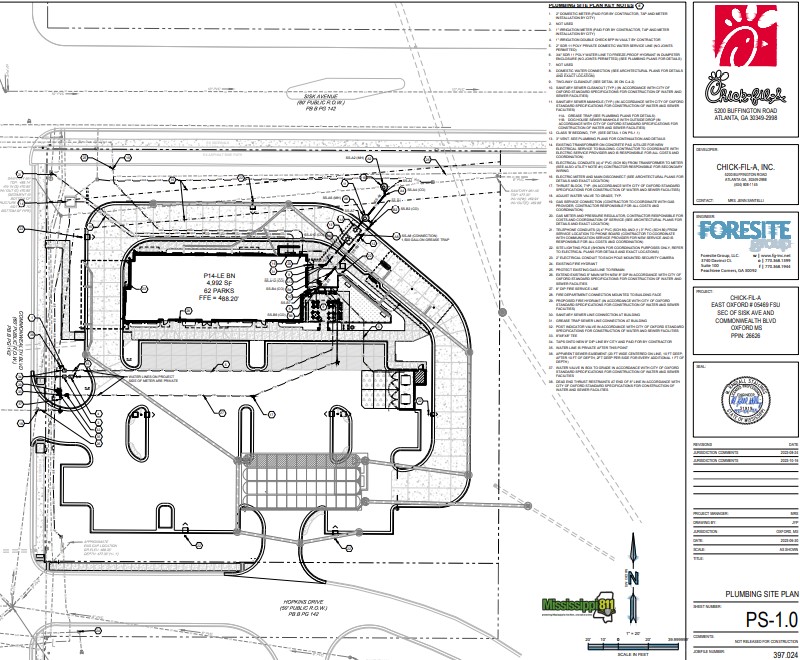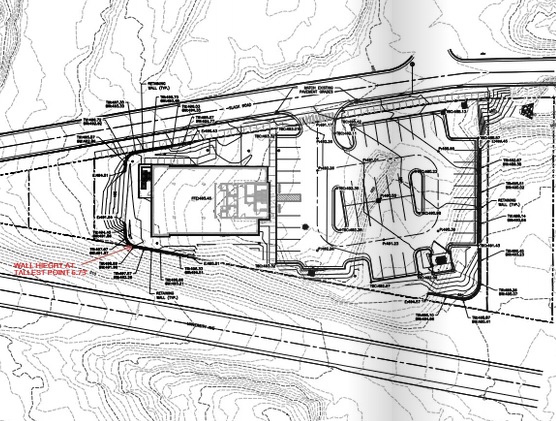Chick-fil-A site plan approved by Commission
Published 5:00 am Wednesday, December 13, 2023

- Image from Chik-Fil-A site plans submitted to Oxford Planning Commission.
Second store will have double parking spots
The Oxford Planning Commission reviewed and approved the proposed site plan for a new Chick-fil-A, presented by Foresite Group, LLC administratively on Oct 31.
That approval, as outlined in documents provided by the Oxford Planning Commission with the agenda for their Dec 11 meeting, paves the way for work to begin on the project soon.
Trending
Oxford’s second Chick-fil-A, to be located on a 1.9-acre lot at Sisk and Hopkins, will be 4,992 square feet, featuring a drive-thru and dining areas.
Notably, the plan included a significant increase in parking spaces, with 62 spots planned, surpassing the usual 33 spaces required for a restaurant of its size.
The Planning Commission approved this adaptation considering the high staffing levels expected at the restaurant. Typically, Oxford requires 10 spaces plus one for every four seats, but the unique needs of this project led to an exception.
The site plan also proposed an underground stormwater management system to ensure environmental compliance and efficient drainage. Considering the restaurant’s strategic location, a key focus was placed on managing peak-hour traffic effectively.
In addressing traffic concerns, the Planning Commission imposed specific requirements on the new Chick-fil-A. These included a detailed entrance and exit strategy, a ban on left turns from Sisk Avenue to Hopkins Drive during peak school hours, and keeping the drive-through line confined to the restaurant’s property.
Before the restaurant’s opening, the commission also mandated the proper setup and approval of the stormwater system to ensure smooth traffic flow and enhanced safety, especially during school rush hours.
Trending
This review of the Chick-fil-A site plan was a crucial aspect of the broader conversation about Oxford Commons, an area characterized by mixed-use development.
Balancing the contrasting preferences of homeowners, who typically seek lower traffic volumes, and business owners, who favor high, efficiently managed traffic for customer access, remains a central challenge in such developments.





